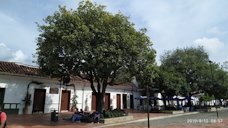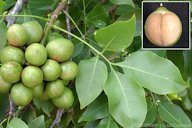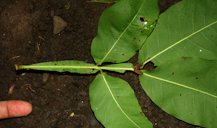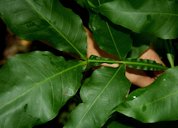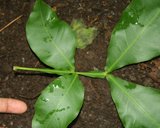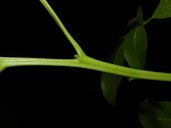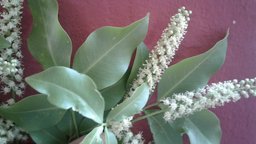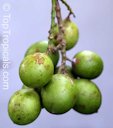| Mamoncillo (Genip) - Melicoccus bijugatus | |||||||||||||||||||||||||||||||||
|---|---|---|---|---|---|---|---|---|---|---|---|---|---|---|---|---|---|---|---|---|---|---|---|---|---|---|---|---|---|---|---|---|---|
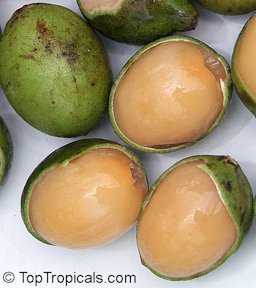 Fig. 1  Melicoccus bijugatus 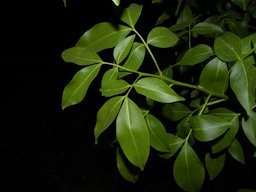 Fig. 2   Fig. 3  Spanish lime, M. bijugatus 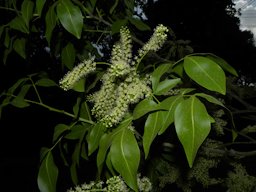 Fig. 12  M. bijugatus  Fig. 13  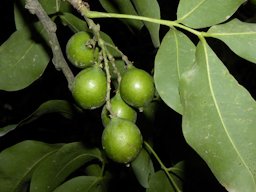 Fig. 17  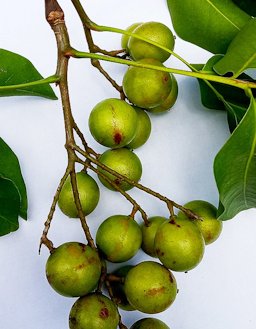 Fig. 18 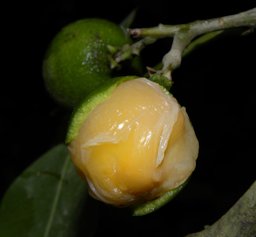 Fig. 19  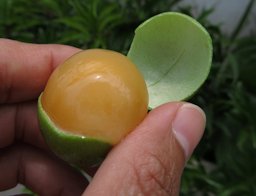 Fig. 20  Mamón, Venezuela 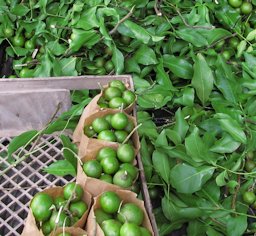 Fig. 21  El mamon y sus preparaciones, Venezuela 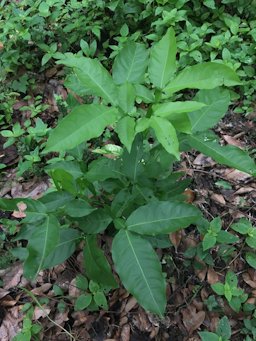 Fig. 26  Seedling, Panama 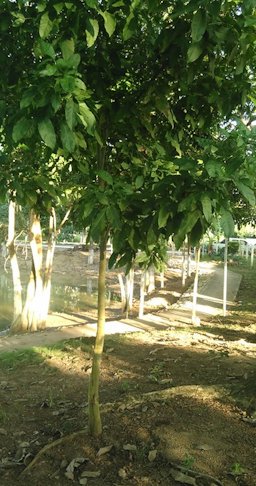 Fig. 27  M. bijugatus, Colombia 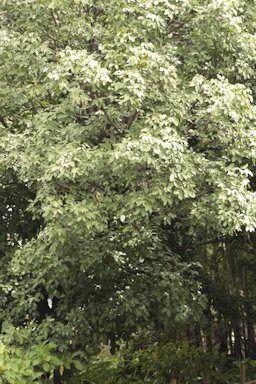 Fig. 28  Genip M. bijugatus, Medellin, Colombia 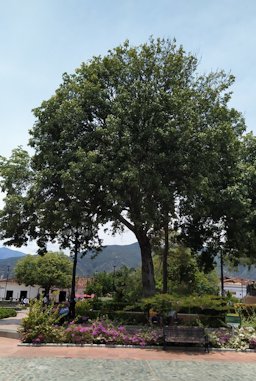 Fig. 29  Genip M. bijugatus, Medellin, Colombia 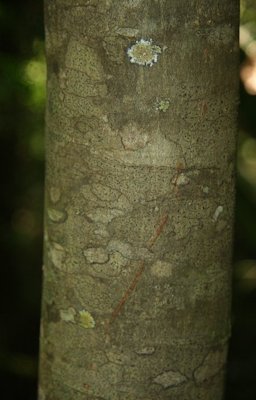 Fig. 30  Spanish lime, M. bijugatus 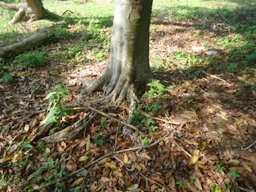 Fig. 31  M. bijugatus, Mamón  Fig. 32  Mamón, Venezuela  Fig. 33  Girl selling mamoncillos, Colombia |
Scientific
name Melicoccus bijugatus Jacq. Common names English: genip, honeyberry; Florida: Spanish lime; Barbados only: ackee (not to be confused with Blighia sapida, q.v.); Barbados, Jamaica, Bahamas, Puerto Rico, Trinidad and Tobago: genip, ginep, ginepe, guenepa, guinep; Mexico: grosella de miel, guayo; Guyana: honeyberry; Puerto Rico: Jamaica bullace plum, kanappy; Surinam: knepa; Dominican Republic: limoncillo; Colombia, Venezuela: maca; Venezuela: maco; Colombia, Venezuela, El Salvador, Nicaragua, Costa Rica, Panama, Argentina: mamon; Costa Rica: mamon de Cartagena; Guyana: marmalade box; Venezuela: maco; Colombia, Venezuela: macauo; Dominican Republic, Puerto Rico, Colombia: quenepa; Haiti: quenepe; French: kenépier, quenette, quenettes, quenettet, quenettier; French Guiana: quenett, kenet; French West Indies: knepe; Surinam: sensiboom, knippa; El Salvador; tapaljocote; German: Honigbeere, Quenepa; Swedish: honungsbär; Tahitian: kōneti, koneti 2,9,10 Synonyms M. bijuga L., M. bijugatus f. alata Kitan., M. bijugatus f. alatus Kitan., M. carpopodea Juss. 8 Relatives Akee, Blighia sapida Koenig; longan, Dimocarpus longan Lour.; lychee, Lichi chinensis; rambutan, Nephelium lappaceum L. Family Sapindaceae (soapberry family) Origin Native to northern South America and the Island of Margarita 1 USDA hardiness zones 9-12 5 Uses Food; landscape Height Up to 85 ft (26 m) 1 Crown Dense and round Plant habit Evergreen Growth rate Slow Longevity Over 50 years 17 Trunk/bark/branches Stout trunk, sometimes fluted; smooth, thick, gray bark; spreading branches, pointing upward; young branchlets are reddish 2,13 Pruning requirement 12-15 ft (3.7–4.6 m) for ease of pruning and picking; dislikes hard pruning 1,15 Leaves Alternate, compound with 4 opposite, elliptic leaflets; 2-5 in. long (5–13 cm); 1 1/4-2 1/2 in. wide (3.2–6.3 cm) 1 Flowers Fragrant; small, white, 4 petals, 8 stamens; flowers in Apr. and May 1,16 Fruit Drupe; borne in loose clusters; 0.3-0.8 oz (9-22 g); 40 to 59% pulp; peel is smooth, green and thin but leathery and brittle; pulp sweet, translucent 1,16 Season June through Sept. 1 Light requirement Full sun; semi shade Soil tolerances Well-adapted to a wide range of well-drained soils including sandy soils with high or low pH, and high-pH calcareous soils found in Miami-Dade County 1 pH preference 5.6-7.8; neutral and basic (alkaline) soils and can grow in very alkaline and saline soils 5 Drought tolerance Can tolerate long periods of drought 2 Flood tolerance The roots are intolerant of flooding 17 Aerosol salt tolerance Moderately salt tolerant 17 Soil salt tolerance Moderately salt tolerant 17 Cold tolerance Survives about 26.6 °F (-3 °C), but young growth can be severely damaged 30 °F (-1 °C) 6 Plant spacing Should be planted at least 25 ft (7.6 m) from nearby trees/structures, mature trees that are not regularly pruned may become quite large 1 IRoots Seedlings produce a long taproot; lateral roots develop with age 17 nvasive potential * None reported Known hazard The seed, being slippery, is a potential choking hazard 7 Reading Material Mamoncillo (Genip) Growing in the Florida Home Landscape, University of Florida pdf Spanish Lime, Fairchild Tropical Botanic Garden Mamoncillo, Fruits of Warm Climates Quenepa, kinep, Spanish-lime, Common trees of Puerto Rico and the Virgin Islands Origin/Distribution The mamoncillo is native to Colombia, Venezuela, and the island of Margarita, also French Guiana, Guyana and Surinam. It is commonly cultivated and spontaneous in those countries, also in coastal Ecuador, the lowlands of Central America, the West Indies and in the Bahamas. In Florida, it is occasionally grown as far north as Ft. Myers on the West Coast and Palm Beach on the east; is much more plentiful in Key West, especially as a street tree. 2 Sapindaceous Fruits and Nuts, West Australian Nut and Tree Crop Association Description Melicossus bijugatus Jacq., also known as quenepa, mamon (Spanish), genip (English), quenette (French), and by many other common names, is native to northern South America and is cultivated and naturalized widely throughout the tropics. Quenepa is a beautiful tree that is planted for urban shade (Fig. 5) and for the tasty fruit if bears. The wood is useful for furniture and trim, but supplies are limited. 11
Fig. 5. Genip M. bijugatus, Antioquia, Colombia Leaves The leaves are briefly deciduous, alternate, compound, having 4 opposite, elliptic, sharp-pointed leaflets 2 to 5 in (5-12.5 cm) long and 1 1/4 to 2 1/2 in (3.25-6.25 cm) wide, the rachis frequently conspicuously winged (Fig. 7) as is that of the related soapberry (Sapindus saponaria L.). Terminal leaflets being larger than the other two, they are light green. The bark has irregular warty projections from its otherwise smooth surface. 2,13
Flowers Flowers are produced in 1- to 4-inch-long (2.5–10 cm) terminal racemes during spring (April–May). Flowers are small, white, with 4 petals and 8 stamens. Male and female flowers are usually borne on separate trees (dioecious), although some trees are partly polygamous (i.e., have both male and female flowers on the same tree). However, the pollen from these male flowers may not be viable. The flowers are fragrant and attractive to bees. 1,13
Fig. 14. Genip, M. bijugatus in bloom, Colombia Fig. 15. Close-up of the inflorescense Fig. 16. Genip M. bijugatus, Panama Pollination In general, two trees, one functionally male and the other functionally female, are needed to insure good fruit production. The flowers are pollinated by flying insects including honey bees. 1 Fruit The fruit clusters are branched, compact and heavy with nearly round, green fruits tipped with a small protrusion, and suggesting at first glance small unripe limes, but there the resemblance ends. The skin is smooth, thin but leathery and brittle. The glistening pulp (aril) is salmon-colored or yellowish, translucent, gelatinous, juicy but very scant and somewhat fibrous, usually clinging tenaciously to the seed. When fully ripe, the pulp is pleasantly acid-sweet but if unripe acidity predominates. In most fruits there is a single, large, yellowish-white, hard-shelled seed, while some have 2 hemispherical seeds. The kernel is white, crisp, starchy, and astringent. 2 The pulp is sweet (18.5 to 26% total soluble solids; higher numbers are sweeter). Fruit must be ripened on the tree for best flavor. They are extremely rich in iron and phosphorus. 1,7 The pulp adheres to the seed in most cases, making removal of the pulp difficult. There are some varieties, however, that are said to be freestone, and the pulp separates cleanly from the seed. 12
Fig. 22. M. bijugatus, Melicocca bijuga Fig. 23. Close-up of fruit, fruit flesh and seed of M. bijugatus Fig. 24. Genip, M. bijugatus, Cuba Fig. 25. Huaya, fruta de le región Fig. 26. Genip seeds Varieties There are a number of mamoncillo varieties available in Florida including 'Large', 'Jose Pabon', and 'Montgomery'. 1 There are efforts in Puerto Rico and Florida to produce cultivars with a more favourable flesh-to-seed ratio. 6 "The 'Queen' variety of Spanish lime from Key west is the largest, best tasting variety I have yet to come across. the tree is bisexual so it bears a limited crop even without pollination from a male. However, when crossed with a male its fruit production is greatly increased. Excessive soil moisture should be avoided during the winter as this can result in no bloom the following spring. This outstanding variety produces one-and-one-half-inch diameter fruit, running fourteen to the pound. As its delicious fruit is easily sucked off the seed when eaten, I should label it "free-stone." 14 Harvesting Mamoncillo is generally harvested from June through September. Mamoncillo fruit should be harvested when fully ripe. Ripe fruit undergo no real color change and remain green in color. Ripeness may be determined by fruit size and flavor. The entire fruiting cluster should be clipped from the tree and individual fruit separated by clipping. At this stage, the rind becomes brittle but does not change color. If picked prematurely, the rind turns blackish, a sign of deterioration. Fruit may be held at room temperature (78–82°F; 26–28°C) or refrigerated for a few days prior to consumption. 1,2 Propagation Mamoncillo may be propagated by seed, however, varieties do not come true to seed and seedling trees may not begin fruit production for 8 to 10 years. Trees may be vegetatively propagated by marcottage (air-layering branches of 2 inches of diameter during the warm part of the year, rooting in 5 to 6 weeks). Grafting or budding onto seedling rootstock may not always be successful. 1 Asexually propagated material bears fruit in about 3-4 years. 16 Types of Propagation, Edible South Florida Vegetative Propagation of Spanish Lime and Jaboticaba, Florida State Horticultural Society pdf Pruning Young trees should not be pruned their first year but should be allowed to grow. During the spring of the second year, branching should be encouraged by heading back the main stem and selecting 4 or 5 well-placed branches. Once new shoots reach 3 ft (0.9 m) in length, they may be tipped back to encourage further branching. After the third year, trees should be pruned to remove poorly placed limbs and dead wood. Trees should be kept at a maximum of about 12 to 15 ft (3.7–4.6 m). If the canopy becomes too dense, removing some inner branches will help in air circulation and light penetration. 1 Fertilizing Young trees (less than 4 years old) should be fertilized with 0.25 to 0.50 lbs (0.11 to 0.22 kg) of a complete fertilizer every 8 weeks. 1 Once trees are 4 or more years old and begin fruit production, applications of nitrogen-containing fertilizer from August until early spring (February–March) should be avoided. Nitrogen applications during this time may stimulate new vegetative growth (i.e., leaves and shoots) and reduce or eliminate the potential for flowering and fruit production. 1 In acid to neutral-pH soils, micronutrients such as manganese, zinc, and iron may be applied in dry applications to the soil. However, foliar applications of manganese and zinc should be made to trees growing in high-pH, calcareous soils. One to two applications of micronutrients should be made during the growing season (March to November). 1 Irrigation Young trees should be irrigated regularly to facilitate tree establishment and growth. Once trees begin to bear (3 to 4 years after planting), trees should be watered during dry periods from flowering through harvest. Mature mamoncillo trees appear to be quite tolerant of dry soil conditions but may benefit from periodic watering during prolonged dry periods that coincide with flowering and fruit development. 1 Pests/Diseases In general, mamoncillo has few insect pests. Mamoncillo has few disease problems. A root rotting fungus (Clitocybe tabescens) may weaken or kill trees but this is not a common problem. Several fungi cause leaf spots (Fusarium spp. and Phyllosticta spp.) and red algae may attack leaves, stems, and limbs, causing dieback. Contact your local UF/IFAS Extension agent for current control recommendations. 1 Food Uses Beneath its green skin is a large seed coated in a peach colored flesh, which tastes a bit like a lime. The most common way of eating Spanish limes is to remove the skin and eat the pulp from the seed. With fruits that have non-adherent pulp, the latter may be scraped from the seed and utilized to make pie-filling, jam, marmalade or jelly, but this entails much work for the small amount of edible material realized. More commonly, the peeled fruits are boiled and the resulting juice is prized for cold drinks. In Colombia, the juice is canned commercially amd the peeled fruit are often soaked in rum and sugar to make a delicious beverage. If roasted, the seeds are edible and can be eaten like chestnuts. Spanish lime is a good source of iron, as well as fiber, calcium, Vitamin A, phosphorus and niacin. 2,3 Seeds within the fruit can be roasted and then ground into flour or eaten whole. 17 Medicinal Properties ** In Venezuela, the astringent roasted seed kernels are pulverized, mixed with honey and given to halt diarrhea. The astringent leaf decoction is given as an enema for intestinal complaints. 3 Other Uses Juice: A dye has been experimentally made from the juice of the raw fruit which makes an indelible stain. Flowers: The flowers are rich in nectar and highly appealing to hummingbirds and honeybees. The honey is somewhat dark in color but of agreeable flavor. The tree is esteemed by Jamaican beekeepers though the flowering season (March/April) is short. 3 Leaves: In Panama, the leaves are scattered in houses where there are many fleas. It is claimed that the fleas are attracted to the leaves and are cast out with the swept-up foliage. Some believe that the leaves actually kill the fleas. 3 Wood: The heartwood is yellow with dark lines, compact, hard, heavy, fine-grained; inclined to decay out of doors, but valued for rafters, indoor framing, and cabinetwork. 3 The species is also commonly planted along roadsides as an ornamental tree. 7 General This fruit, known as quenepa in Puerto Rico, grows particularly abundantly in the municipality of Ponce, and there is a yearly celebration in that municipality known as Festival Nacional de la Quenepa (National Genip Fruit Festival). 4
Fig. 34. Mamoncillo distribution map, wild populations Further Reading Melicoccus bijugatus Jacq. Quenepa. Sapindaceae. Soapberry family, USDA Forest Service pdf The Mamoncillo, Manual Of Tropical And Subtropical Fruits The Spanish Lime, Archives of the Rare Fruit Council of Australia List of Growers and Vendors |
||||||||||||||||||||||||||||||||
| Bibliography 1 Crane, Jonathan H., and Carlos F. Balerdi. "Mamoncillo (Genip) Growing in the Florida Home Landscape." Horticultural Sciences Dept., UF/IFAS Extension, HS1070, Original pub. Nov. 2006, Rev. Nov. 2016, Rev. Dec. 2019, AskIFAS edis.ifas.ufl.edu/hs310. Accessed 2 Feb. 2020. 2 Ledesma, Noris. "Spanish Lime." Fairchild Tropical Botanic Garden, Miami Herald, 7 Oct. 2012 www.fairchildgarden.org/Tropical-Garden-Archive/spanish-lime-1. Accessed 7 Dec. 2019. 3 Fruits of Warm Climates. Julia F. Morton. Miami, 1987. 4 "Spanish Lime, Melicoccus bijugatur Jacq." Enclyclopedia of Life, (CC BY-SA 3.0), EOL, eol.org/pages/47125856/articles#cite_note-6. Accessed 3 Feb. 2020. 5 Fern, Ken. "Melicoccus bijugatus, Jacq." Plants for a Future, pfaf.org/user/Plant.aspx?LatinName=Melicoccus+bijugatus. Accessed 3 Feb. 2020. 6 "Melicoccus bijugatus, Jacq." Plants for a Future, via Ecocrop, pfaf.org/user/Plant.aspx?LatinName=Melicoccus+bijugatus. Accessed 3 Feb. 2020. 7 "Melicoccus bijugatus Jacq. in Döring M." English Wikipedia, Species Pages, Checklist dataset, Wikimedia Foundation, via GBIF.org, 2019, doi.org/10.15468/c3kkgh. Accessed 3 Feb. 2020. 8 "Synonyms for Melicoccus bijugatus Jacq." The Plant List (2013), Version 1.1, www.theplantlist.org. Accessed 4 Feb. 2020. 9 "Taxon: Melicoccus bijugatus Jacq." USDA, Agricultural Research Service, National Plant Germplasm System, Germplasm Resources Information Network (GRIN-Taxonomy), National Germplasm Resources Laboratory, Beltsville, Maryland, 2020, U.S. National Plant Germplasm System, sweb.ars-grin.gov/gringlobal/taxonomydetail.aspx?id=70440. Accessed 4 Feb. 2020. 10 "Melicoccus bijugatus." Pacific Island Ecosystems at Risk, 21 May 2013, PIER, www.hear.org/pier/species/melicoccus_bijugatus.htm. Accessed 4 Feb. 2020. 11 Francis, John K. "Melicoccus bijugatus Jacq. Quenepa. Sapindaceae. Soapberry family." USDA Forest Service, Southern Forest Experiment Station, Institute of Tropical Forestry SO-ITF-SM; 48, 1992, US Forest Service, Public Domain, www.fs.fed.us/global/iitf/pubs/sm_iitf048%20%20%284%29.pdf. Accessed 4 Feb. 2020. 12 Joyner, Gene. "The Spanish Lime." Tropical Fruit News, Vol.29 No.4, Apr. 1995, Archives of the Rare Fruit Council of Australia, May 1995, rfcarchives.org.au/Fruits/SpanishLime/SpanishLime7-95.htm. Accessed 5 Feb. 2020. 13 Kirk, Kent T. Tropical trees for Florida and the Virgin Islands. A Guide to Identification, Characteristics and Uses. Sarasota, Pineapple Press, 2009, 2017. 14 Whitman, William F. Five Decades with Tropical Fruit, A Personal Journey. Stuart, Quisqualis Books in cooperation with Fairchild Tropical Garden, 2001. 15 Barwick, Margaret. Tropical & Subtropical Trees. A Worldwide Encyclopaedic Guide. London, 2004. 16 Duarte, Odilo and Robert E. Paull. Exotic Fruits and Nuts of the New World. Cambridge, CABI, 2015. 17 "Growing Spanish Lime: Melicoccus bijugatus." Garden Oracle, gardenoracle.com/images/melicoccus-bijugatus.html. Accessed 8 Apr. 2023. Photographs Fig. 1 "Melicoccus bijugatus, Melicocca bijuga." Top Tropicals, toptropicals.com/pics/garden/06/olymp0/P7130057.jpg. Accessed 4 Feb. 2020. Fig. 2,3,7,8,9,29 Janzen, Daniel H. "Spanish Lime, Melicoccus bijugatus Jacq." Guanacasta Dry Forest Conservation Fund, 2010, EOL, (CC BY-SA 3.0), eol.org/pages/47125856/media. Accessed 3 Feb. 2020. Fig. 4 Idárraga O., Liu. "Genip Melicoccus bijugatus. Antioquia, Colombia." iNaturalist, Research Grade, 31694285, 4 Feb. 2019, (CC BY-NC), www.inaturalist.org/photos/31694285. Accessed 4 Feb. 2020. Fig. 5 Benavides, Ana Maria. "Genip Melicoccus bijugatus. Panama." iNaturalist, Research Grade, 36893690, 12 Sept. 2019, (CC BY-NC 4.0), www.inaturalist.org/photos/36893690. Accessed 4 Feb. 2020. Fig. 6 McCormack, Gerald."Melicoccus bijugatus Jacq." Cook Islands Biodiversity Database, Version 2007.2, Cook Islands Natural Heritage Trust, Rarotonga, 2007, cookislands.bishopmuseum.org. Accessed 4 Feb. 2020. Fig. 10,11,12,13,17 Aguilar, Reinaldo. "Melicoccus bijugatus Jacq." Vascular Plants of the Osa Peninsula, Costa Rica, Encyclopedia of Life, via Flickr, EOL, Image cropped, (CC BY-NC-SA 2.0), eol.org/pages/47125856/media. Accessed 3 Feb. 2020. Fig. 14 de Roux, Juan Manuel. "Genip Melicoccus bijugatus. Panama." iNaturalist, Research Grade, 55530580, 27 Oct. 2019, (CC BY-NC 4.0), www.inaturalist.org/photos/55530580. Accessed 4 Feb. 2020. Fig. 15 de Roux, Juan Manuel. "Genip Melicoccus bijugatus. Panama." iNaturalist, Research Grade, 55530568, 27 Oct. 2019, (CC BY-NC 4.0), www.inaturalist.org/photos/55530568. Accessed 4 Feb. 2020. Fig. 16 Espinosa, Alex. "Genip Melicoccus bijugatus. Panama." iNaturalist, Research Grade, 33489219, 25 Mar. 2019, (CC BY-NC 4.0), www.inaturalist.org/photos/33489219. Accessed 4 Feb. 2020. Fig. 18 Filo gèn'. "Melicoccus bijugatus." Wikimedia Commons, 30 July 2019, GFDL, (CC BY-SA 4.0), commons.wikimedia.org/wiki/Category:Melicoccus_bijugatus#/media/File:Melicoccus_bijugatus,_Fruits_02.jpg. Accessed 3 Feb. 2020. Fig. 20,21,32 A. Brito, Maria. "El mamon y sus preparaciones." La Casita de Maribri, 12 Aug. 2011 (CC BY-NC-ND 3.0), Image cropped, lacasitademaribri.blogspot.com/2011_08_01_archive.html. Accessed 2 June 2022. Fig. 22 "Melicoccus bijugatus, Melicocca bijuga." Top Tropicals, toptropicals.com/pics/garden/05/10/0975.jpg. Accessed 4 Feb. 2020. Fig. 23 Hans B. "Close-up of fruit, fruit flesh and seed of Melicoccus bijugatus." Encyclopedia of Life, via Wikimedia Commons, 792749, 18 May 2006, EOL, Public Domain, Image cropped, eol.org/media/7606918. Accessed 3 Feb. 2020. Fig. 24 de J. Carcaño Loeza, Alvaro. " Huaya, fruta de le región." Wikimedia Commons, 26 July 2016, (CC BY-SA 4.0), commons.wikimedia.org/wiki/Category:Melicoccus_bijugatus#/media/File:Huaya,_fruta_de_le_región_de_Yucatán.jpg. Accessed 3 Feb. 2020. Fig. 25 Filo gèn'. "Genip seeds." Wikimedia Commons, 31 July 2019, GFDL, (CC BY-SA 4.0), commons.wikimedia.org/wiki/Category:Melicoccus_bijugatus#/media/File:Melicoccus_bijugatus,_Seeds_04.jpg. Accessed 3 Feb. 2020. Fig. 26 gumercindopimentel. "Genip Melicoccus bijugatus. Panama." iNaturalist, Research Grade, 41742065, 12 June 2019, (CC BY-NC 4.0), www.inaturalist.org/photos/41742065. Accessed 4 Feb. 2020. Fig. 27 generacion juvenilambiental. "Melicoccus bijugatus. Colombia." Flickr, 21 Oct. 2016, (CC BY-NC-SA 2.0), www.flickr.com/photos/148238796@N07/30355966902/. Accessed 4 Feb. 2020. Fig. 28 Valencia, Gustavo. "Genip Melicoccus bijugatus. Medellin, Colombia." iNaturalist, Research Grade, 37465652, 25 Mar. 2019, (CC BY-NC 4.0), www.inaturalist.org/photos/37465652. Accessed 4 Feb. 2020. Fig. 29 Benavides, Ana Maria. "Genip, Melicoccus bijugatus. Panama." iNaturalist, Research Grade, 58394452, 12 Sept. 2019, (CC BY-NC 4.0), Image cropped, www.inaturalist.org/photos/58394452. Accessed 4 Feb. 2020. Fig. 30 Jovenes Investigadores Ondas. "Melicoccus bijugatus. Mamón. Colombia." Flickr, 20 May 2016, (CC BY-NC-SA 2.0), www.flickr.com/photos/139391893@N07/27165544002/. Accessed 4 Feb. 2020. Fig. 31 Bouchard, Philip. "Girl Selling Mamoncillos, Colombia." Flickr, 1980, (CC BY-NC-SA 2.0), www.flickr.com/photos/pbouchard/398506767. Accessed 5 Feb. 2020. Fig. 32 Wunderlin, R. P., et al. "Melicoccus bijugatus Jacq." Institute for Systematic Botany, University of South Florida, Tampa, S. M. Landry and K. N. Campbell (application development), USF Water Institute, 2019, Atlas of Florida Plants, florida.plantatlas.usf.edu/Plant.aspx?id=1529. Accessed 4 Feb. 2020. * UF/IFAS Assessment of Non-native Plants in Florida's Natural Areas ** Information provided is not intended to be used as a guide for treatment of medical conditions. Published 22 Feb. 2020 LR. Last update 8 Apr. 2023 LR |
|||||||||||||||||||||||||||||||||

